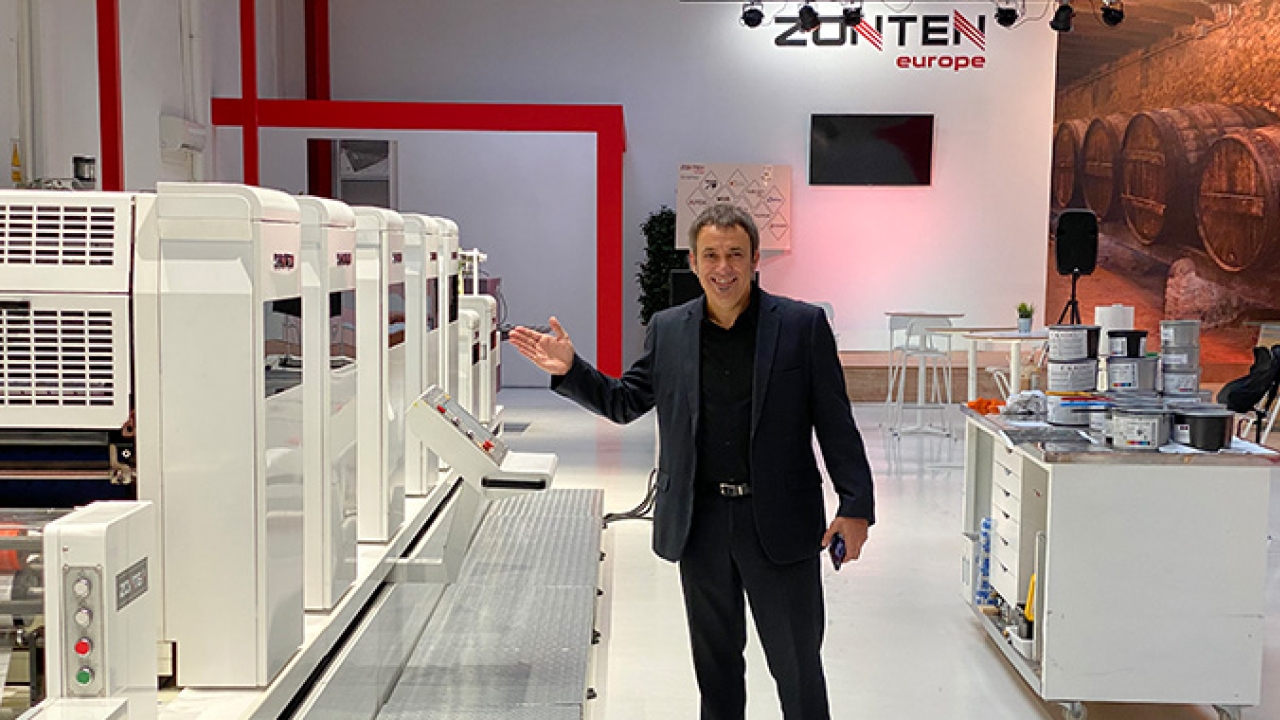Semi-rotary offset success for Zonten Europe

The Sant Quirze del Vallés, Barcelona-headquartered company has installed more than 20 Zonten Multiprint ZTJ 330/520 presses since celebrating the official opening of its offices and demo center – attended by around 200 people – in April 2019. It has also appointed a raft of agents across Europe as well as setting up a local office in Buenos Aires.
The company is the brainchild of Jordi Quera and Eduardo Sá, who each boast more than 30 years’ experience in the label sector. Quera worked for Kodak in the 1990s before spending 14 years with Esko and three with Rotatek – where semi-rotary offset presses were part of the portfolio. He has been president of Spanish association Graphispack for the last seven years. Sa is CEO and founder of Spanish company Esagraf, a distributor for many leading international suppliers including Nilpeter, Prati and Pantec, and which is also serving as Zonten Europe’s distributor for Spain and Portugal.
‘We saw there was a niche in the market for semi-rotary offset technology, which can compete with digital for short runs because of its quality, flexibility and fast changeovers,’ says Quera. A tour of press manufacturers in Asia led them to Zonten, which has more than 15,000 installations of its equipment worldwide, including 500 of its semi-rotary offset press.
Zonten Europe, an independent company rather than a subsidiary, now has exclusive rights to the Zonten’s semi-rotary offset press in Europe and Latin America. ‘We have improved the product and made it more competitive for the European market,’ explains Quera. ‘The version of the machine available through Zonten Europe is more advanced – featuring for example hot stamping, screen printing and semi-rotary die-cutting. The press is more complete. And, crucially, we offer high-level technical support.’
The Zonten Multiprint ZTJ 330/520 has an automatic preregistration system with tension control, a web width of 330mm or 520mm, independent servo-driven offset units and semi-automatic plate changing that reduces changeover times. The presses are manufactured in China, where there is a dedicated area of Zonten’s factory which builds the presses destined for Zonten Europe’s customers in Europe and Latin America. A Zonten Europe technician is on hand to ensure the machines meet European CE certification requirements.
The presses have been selling quickly, with customers already in Italy, Spain, Portugal, Germany, Austria and Mexico. Among them is Gráficas Varias, a leading Spanish converter which recently celebrated its 100th anniversary. Meanwhile, Zonten Europe has been building its team in Spain and appointing agents throughout Europe. ‘We have agents covering Spain, Portugal, Italy, Germany, Austria, Switzerland, Benelux, Scandinavia. We can cover everywhere except the Balkans,’ says Quera. ‘Each agent can offer local technical support and service.’
Seven-minute changeover
Zonten Europe exhibited at Labelexpo Europe last year and had ‘a great show’, according to Quera. ‘We received a lot of leads, many which have been converted into sales. At the event, we demonstrated that within just seven minutes you can set up the press – removing the old plates and adding new ones, adjusting the settings – and be printing at 60m/min. Visitors were able to compare the color matching of the same job printed earlier, and could see it was exactly the same.’
The press has a basic configuration of five semi-rotary offset units, one flexo unit for varnish, and one semi-rotary die-cutting unit. But the machine is highly flexible, and can be customized according to the customer’s needs to incorporate more printing units and in-line options such as screen printing, hot stamping, embossing, cold foil, relam/delam and more. ‘Wine label converters tend to opt for the complete configuration,’ reports Quera, ‘but the basic version is also popular because it is cost-effective, allows you to run many different materials, and can achieve high speeds and fast changeovers.
‘Offset has the highest quality of all the print processes. And semi-rotary offset has found a niche within the market, competing with digital for short runs for a lower investment.’
Stay up to date
Subscribe to the free Label News newsletter and receive the latest content every week. We'll never share your email address.


